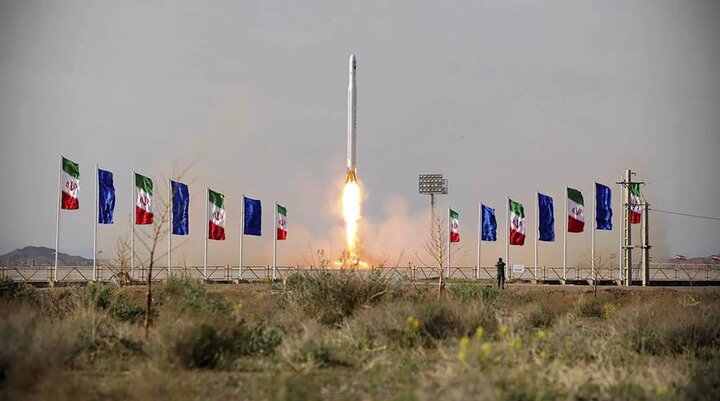Iran (IMNA) - Salariyeh revealed that various actions have been taken this year in accordance with Iran's 10-year space vision plan. The construction of multiple micro-satellites and mini-satellites has already begun. The Electronic Industries Organization of the Ministry of Defense and Space Research Institute are collaborating on the construction of Pars 2 and Pars 3 satellites. While the construction of Pars 2 is underway, Pars 3 is still in the preliminary design phase.
Furthermore, Salariyeh disclosed that the prototype of the Nahid 2 satellite has been revealed. The final model, set to be launched either by the end of this year or the beginning of next year, is currently being prepared.
According to Salariyeh, the satellite will offer communication services at a low altitude. Additionally, he mentioned that the design and construction plan for Nahid 3, which is more advanced, has been established and is currently being discussed. Salariyeh also revealed that Iran has initiated the construction of a radar-class sensing satellite, which is a first for the country. This type of satellite has the advantage of collecting data from the Earth's surface regardless of weather conditions.
In the upcoming months, the Islamic Republic of Iran plans to launch multiple satellites into space and position them in low Earth orbits (LEOs). Salariyeh expressed confidence in conducting orbital and sub-orbital test launches within the next six months, thanks to their research and development programs. Despite facing sanctions from Western countries, Iran has made significant progress in its civilian space program and is now recognized as one of the top 10 countries capable of developing and launching satellites.
On September 27, Iran's Islamic Revolution Guards Corps (IRGC) Aerospace Force successfully launched the domestically developed imaging satellite Nour-3 into orbit. The satellite, named Nour-3 (Light-3), was deployed using the Qased (Messenger) satellite carrier and placed in an orbit 450 kilometers (280 miles) above the Earth's surface.


Your Comment